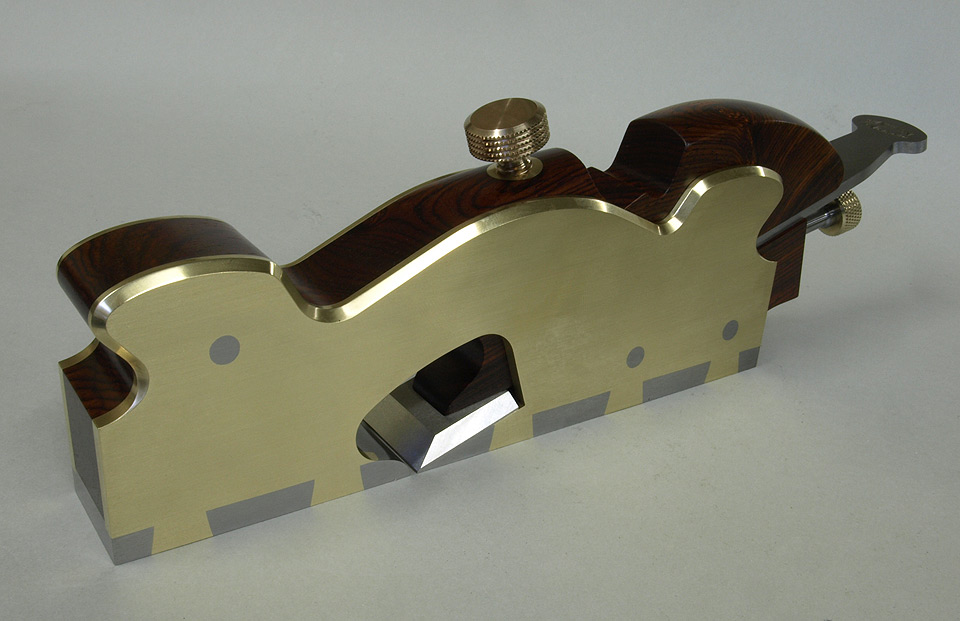Note: This is a classic reprint of an article from NEWS #012, August 1993.

|
Metal Infill Planes
For precise working and quality of finish only a scraper can surpass an English pattern wood infill plane. These planes can also perform tasks beyond the scope of the scraper. Consider for instance the wood infill rebate or shoulder plane.
What is a wood infill plane? Put simply it is a metal casing filled with a wood core. The metal can be either fabricated from plate or cast. Planes made from plate stock are of wrought iron, mild steel, brass or gun metal. Planes made from castings are cast iron, malleable cast iron, brass or gun metal. Fabricated planes are usually made by dovetailing the plates together and penning the joints. This results in a box which cannot be taken apart.
Whether dovetailed or cast the metal box usually cannot support the “iron” by itself. This is achieved by a wooden infill or cove. The blade or iron is retained in place either by a wedge or by a pivoted lever cap. Several mechanical devices are used to achieve this holding function. They include keeper bars, pivoted bars, pivots and "lugs” cast into the body.
These planes achieve a quality finish by virtue of their rigidity. There is no lost motion to generate vibration and hence blade movement. Hard woods, cross grain, interlocked grain, variable grain direction can all be finished to near perfection with gold leaf thin shavings. End grain can be finished with glass like smoothness.
These planes are rightly valued by users and collected by those who appreciate beauty of design and workmanship. The timbers used to fill these planes are commonly: mahogany, walnut, rosewood and ebony.
Such planes should be treated with respect. Do not over restore. The patination of age should be retained. However these artefacts should be returned to full working order. After all they were made for and used by the best artisans who knew how to use and maintain such mechanical marvels.
Restoration should be entrusted only to tradesmen skilled in conserving old artefacts. It is not a wire brush and wax job. Because of the inherent quality most of these planes can be repaired and deserve expert attention.
